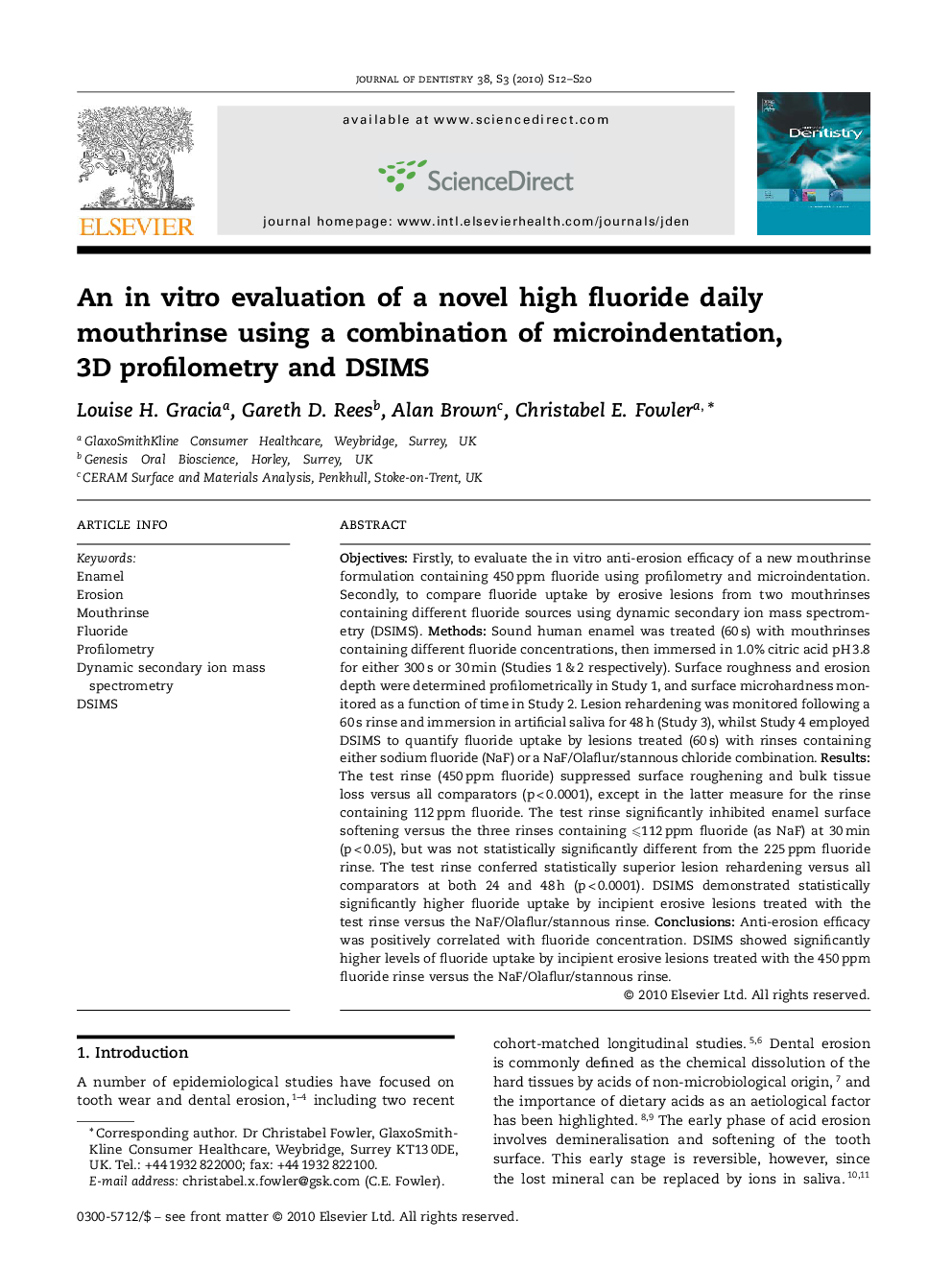| کد مقاله | کد نشریه | سال انتشار | مقاله انگلیسی | نسخه تمام متن |
|---|---|---|---|---|
| 3145341 | 1197068 | 2010 | 9 صفحه PDF | دانلود رایگان |

ObjectivesFirstly, to evaluate the in vitro anti-erosion efficacy of a new mouthrinse formulation containing 450 ppm fluoride using profilometry and microindentation. Secondly, to compare fluoride uptake by erosive lesions from two mouthrinses containing different fluoride sources using dynamic secondary ion mass spectrometry (DSIMS).MethodsSound human enamel was treated (60s) with mouthrinses containing different fluoride concentrations, then immersed in 1.0% citric acid pH3.8 for either 300s or 30min (Studies 1 & 2 respectively). Surface roughness and erosion depth were determined profilometrically in Study 1, and surface microhardness monitored as a function of time in Study 2. Lesion rehardening was monitored following a 60 s rinse and immersion in artificial saliva for 48 h (Study 3), whilst Study 4 employed DSIMS to quantify fluoride uptake by lesions treated (60s) with rinses containing either sodium fluoride (NaF) or a NaF/Olaflur/stannous chloride combination.ResultsThe test rinse (450 ppm fluoride) suppressed surface roughening and bulk tissue loss versus all comparators (p< 0.0001), except in the latter measure for the rinse containing 112 ppm fluoride. The test rinse significantly inhibited enamel surface softening versus the three rinses containing ≤112 ppm fluoride (as NaF) at 30min (p<0.05), but was not statistically significantly different from the 225 ppm fluoride rinse. The test rinse conferred statistically superior lesion rehardening versus all comparators at both 24 and 48 h (p< 0.0001). DSIMS demonstrated statistically significantly higher fluoride uptake by incipient erosive lesions treated with the test rinse versus the NaF/Olaflur/stannous rinse.ConclusionsAnti-erosion efficacy was positively correlated with fluoride concentration. DSIMS showed significantly higher levels of fluoride uptake by incipient erosive lesions treated with the 450 ppm fluoride rinse versus the NaF/Olaflur/stannous rinse.
Journal: Journal of Dentistry - Volume 38, Supplement 3, November 2010, Pages S12-S20